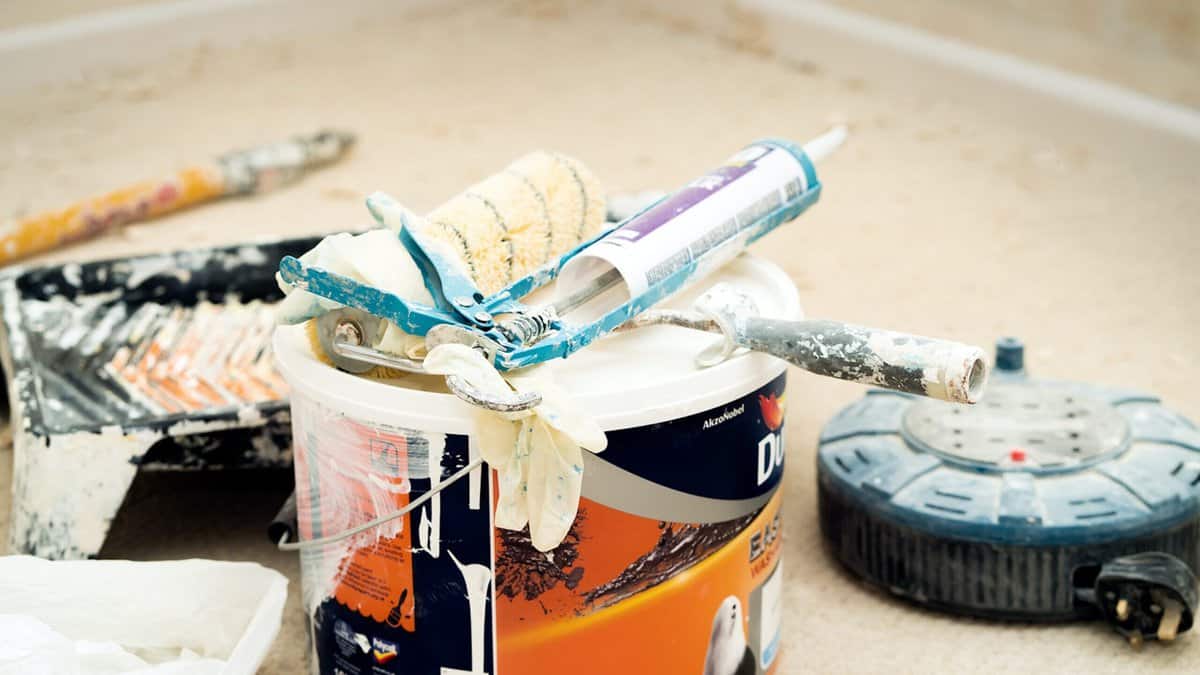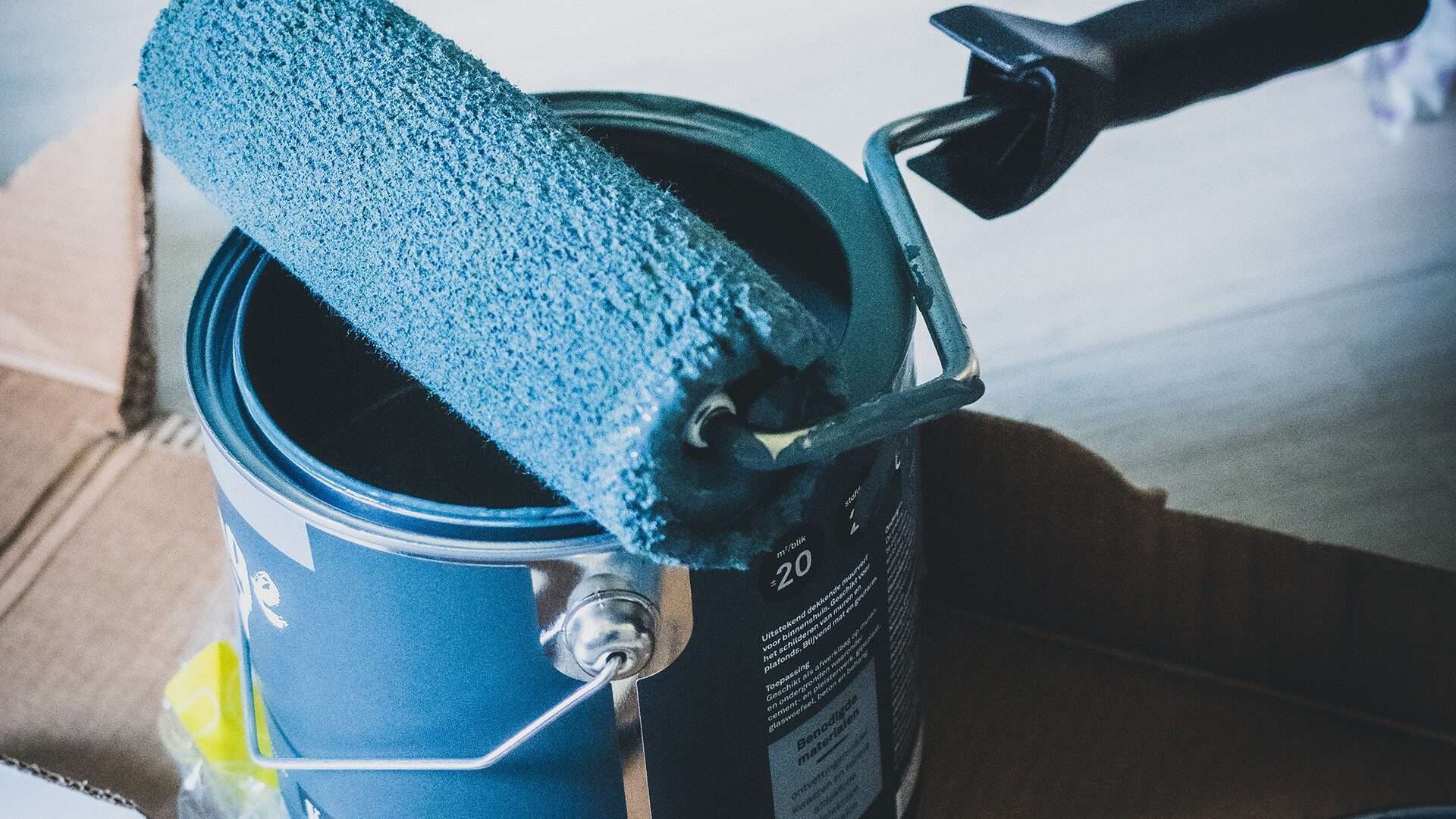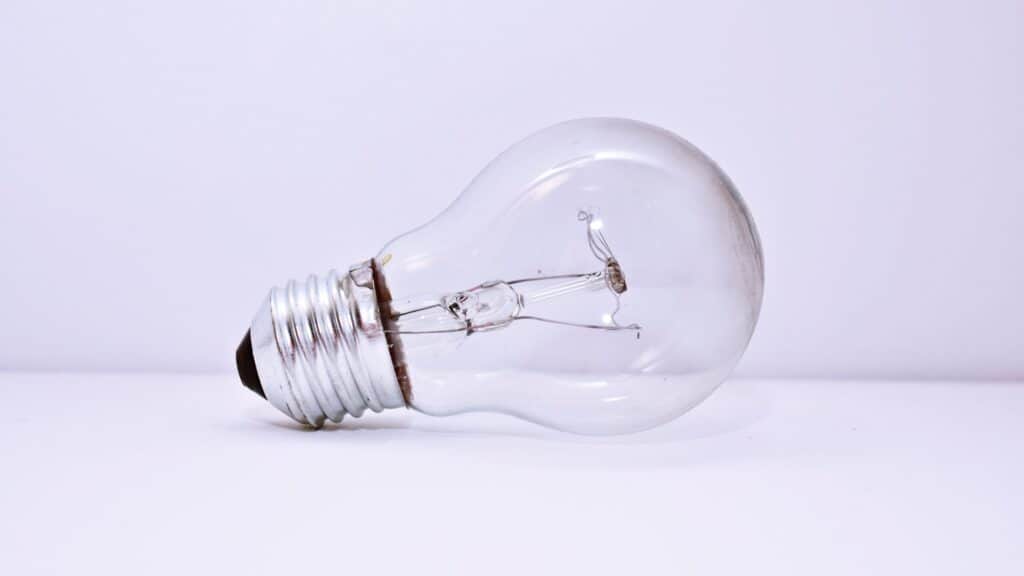When it comes to painting your home, you have two main options: latex paint or enamel paint. Both of these types of paint have their own unique benefits and drawbacks, which is why it’s important to understand the differences between them before making a decision. In this article, we will discuss the key differences between latex and enamel paint, the best uses for each type of paint, the advantages and disadvantages, and the similarities. We’ll help you decide which type is best for your needs!
The key difference between latex and enamel paint is that latex paint is water-based while enamel paint is oil-based. Below we’ll cover in-depth the pros and cons of each type.
Table of Contents
What is latex paint?
Latex paint is a type of water-based paint that is made with acrylic resins. This makes it more flexible and easier to work with than other types of paint. It is also less likely to chip or peel over time. Latex paint is the most popular type of paint for both indoor and outdoor use because it is easy to apply, dries quickly, and is relatively inexpensive.
It’s also important to note that there are two types of latex paint: acrylic latex paint and vinyl acrylic paint. Acrylic latex paint is more durable and resistant to fading than vinyl acrylic paint. However, it is also more expensive.
What is latex paint used for?
Latex paint is a good choice for any painting project, both indoors and outdoors. It can be used on walls, ceilings, trim, and even furniture. It is a good all-purpose paint that is easy to work with and provides good coverage.
Because latex paint is water-based, it is easy to clean up with just soap and water. It is also non-toxic, making it a safe choice for homes with children or pets.
Some examples of where you’d use latex paint are walls, ceilings, trim, and furniture. However, latex paint is not ideal for areas that will be exposed to high temperatures or humidity, such as a kitchen or bathroom.
What are the advantages of latex paint?
Some of the main advantages of latex paint include:
- Easy to apply
- Dries quickly
- Cheaper
- Available in a wide range of finishes
- Non-Toxic
- Easy to clean
Easy to Apply
Compared to enamel paint, latex paint is much easier to apply. It can be brushed, rolled, or sprayed on. It is also a good choice for beginners because it is forgiving and easy to work with.
Dries Quickly
Latex paint dries quickly, usually in about an hour. This is a major advantage if you are working on a large painting project and need to get it done quickly.
Cheaper
Latex paint is usually cheaper than enamel paint. This is because it is water-based and does not require the same amount of raw materials as enamel paint.
Available in a Wide Range of Finishes
Latex paint comes in many finishes, including flat, eggshell, semi-gloss, and high-gloss. This gives you a lot of options when it comes to choosing the right paint for your project.
Non-Toxic
Latex paint is non-toxic, making it a safe choice for homes with children or pets.
Easy to Clean
Latex paint is easy to clean up with just soap and water. You don’t need to use any harsh chemicals or solvents.
What are the disadvantages of latex paint?
Some of the main disadvantages of latex paint include:
- Limited surfaces
- Less durable
- More frequent touch-ups
- Long cure time
Limited Surfaces
Latex paint cannot be used on all surfaces. It is not recommended for use on metal or glass because it will not adhere properly. This includes appliances.
Less Durable
Latex paint is less durable than enamel paint and is more likely to chip or peel over time. It is also more susceptible to fading in direct sunlight.
More Frequent Touch-Ups
Because latex paint is less durable, you will need to touch it up more often. This can be a problem if you are painting a large area.
Long Cure Time
Even though it can be quick-drying, latex paint takes longer to cure than enamel paint. This means it will take longer for the paint to reach its full strength and durability. This can usually mean waiting weeks for the paint to cure completely.
What is enamel paint?
Enamel paint is a type of oil-based paint that is made with synthetic resins. This makes it more durable and resistant to fading than latex paint. Enamel paint is a good choice for painting projects that require a high level of durability, such as trim, doors, and cabinets.
Enamel paint is ideal for spaces such as kitchens and bathrooms because it can withstand high temperatures and humidity. It is also a good choice for metal surfaces, such as appliances, because it will adhere well. Some examples of where you’d use enamel paint are kitchens, bathrooms, trim, doors, and cabinets.
However, enamel paint can be more difficult to work with than latex paint. It is also more toxic and requires special ventilation when you are using it.
What are the advantages of enamel paint?
Some of the main advantages of enamel paint include:
- Durable
- Quicker cure time
- Water-proof
- Heat-resistant
- Can be used for most surfaces
Durable
Enamel paint is more durable than latex paint and is less likely to chip or peel. It can also withstand direct sunlight without fading.
Quicker Cure Time
Enamel paint has a quicker cure time than latex paint. This means it will take less time for the paint to reach its full strength and durability. In most cases, you can expect the paint to be fully cured in just a few days.
Water-Proof
Enamel paint is water-proof, making it a good choice for painting projects that will be exposed to moisture. This includes bathrooms, kitchens, and laundry rooms.
Heat-Resistant
Enamel paint is heat-resistant, making it a good choice for painting projects that will be exposed to high temperatures. This includes fireplaces, radiators, and stoves.
Can be Used for Most Surfaces
Enamel paint can be used on most surfaces, including metal, glass, and appliances. It is also a good choice for painting outdoor furniture. Examples of materials that enamel paint adheres well to most surfaces, including:
- Metal
- Glass
- Ceramic
- Wood
- Porcelain
What are the disadvantages of enamel paint?
Some of the main disadvantages of enamel paint include:
- Toxic fumes
- Difficult to work with
- Difficult to clean up
- Scratched easily
- Expensive
- Slow to dry
- Flammable
Toxic Fumes
Enamel paint emits toxic fumes when it is being used. This can be a problem if you are painting indoors without proper ventilation. It is important to open windows and doors when using enamel paint and to wear a mask to avoid inhaling the fumes.
Difficult to Work With
Enamel paint can be more difficult to work with than latex paint. It is thicker and can be harder to apply evenly. It is also important to let each coat of paint dry completely before applying the next coat.
Difficult to Clean Up
Enamel paint is more difficult to clean up than latex paint. It can require special cleaners and solvents to remove it from surfaces. It is also important to wear gloves and a mask when cleaning up enamel paint to avoid inhaling the fumes.
Scratched Easily
Even though enamel paint is durable after hardening it is still susceptible to being scratched. So it is advised to be wary of sharp objects or high traffic areas.
Expensive
In comparison to latex, enamel paint can be expensive. This is due to the fact that it is oil-based and made with synthetic resins that make it so durable.
Slow to Dry
Enamel paint takes longer to dry than latex paint. In most cases, it will take 24-48 hours for the paint to fully cure. Some water-based enamel, on the other hand, can dry to the touch in an hour. If you’re willing to sacrifice its resistance to wear and tear, you may trade it for a faster drying time and less hazardous emissions.
Flammable
Enamel paint can be highly flammable when wet. This means it is important to be careful when using it near open flames. It is also important to let the paint dry completely before using any appliances that generate heat.
Now that we’ve looked at the key differences between latex paint and enamel paint, let’s take a closer look at the similarities of each type of paint.
Similarities Between Latex and Enamel Paint
Although Latex and Enamel are considered to be diametrically opposed, they do have certain traits in common. Water-based enamel has also been produced, and it may be used with latex paint to produce effects similar to those of enamel.
Both are also commonly used for trims and doors since both produce a beautiful sheen. They’re recognized for their usage on a variety of things, and both usually need a primer for the best outcomes.
Summary
While both latex and enamel paint are great in their own right, there are key differences that make each type of paint better suited for different projects.
Enamel paint is more durable and heat-resistant, making it a good choice for painting projects that will be exposed to high temperatures or wear and tear. It also adheres well to most surfaces. However, enamel paint is more difficult to work with, emits toxic fumes, and is more expensive than latex paint.
Latex paint is easier to work with and cleaner up, making it a good choice for painting projects that are not as demanding. Latex works best on surfaces that are not exposed to high temperatures or a lot of wear and tear. It is also less expensive than enamel paint. However, latex paint is not as durable or heat-resistant as enamel paint.
Ultimately, the best paint for your project will depend on your specific needs. Consider the type of surface you are painting, the amount of wear and tear it will endure, your budget, and your own personal preferences to decide which type of paint is right for you.





